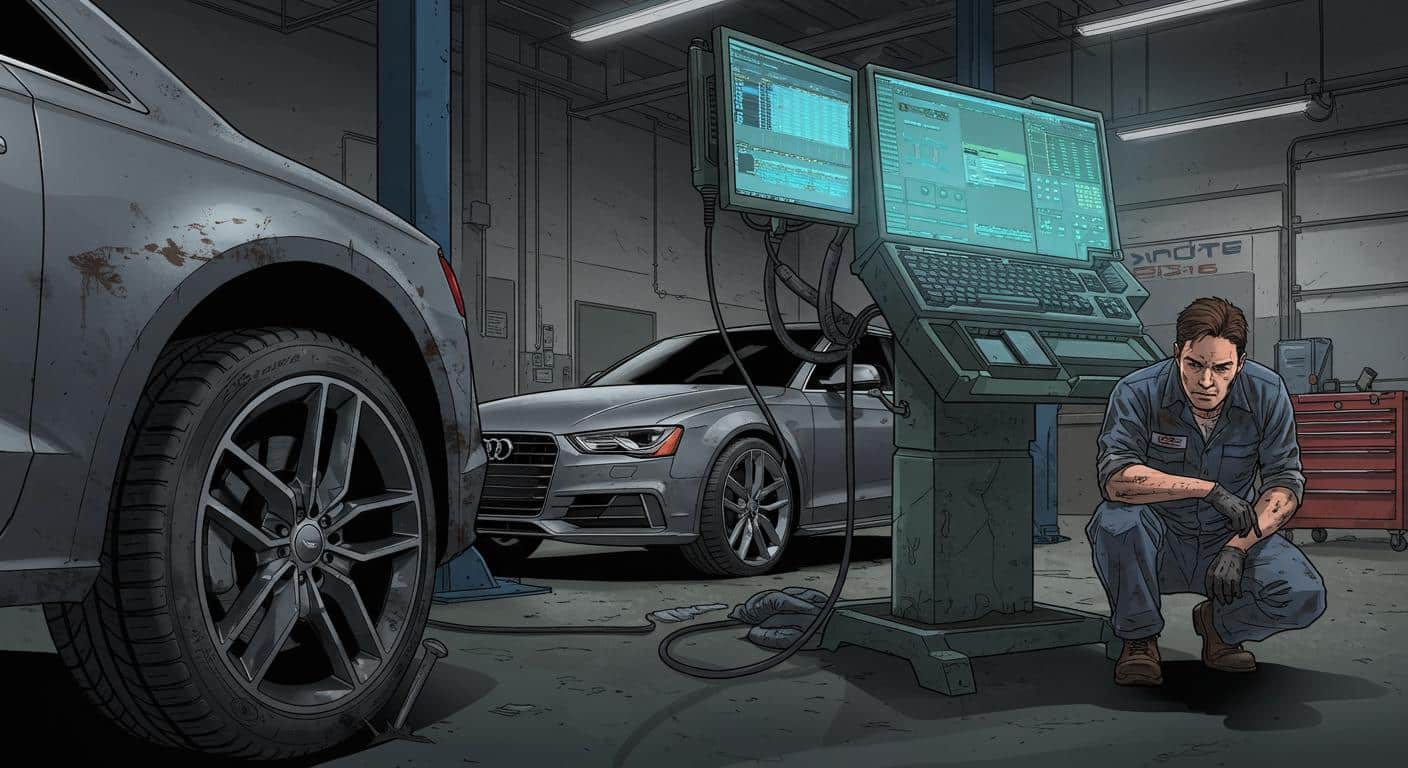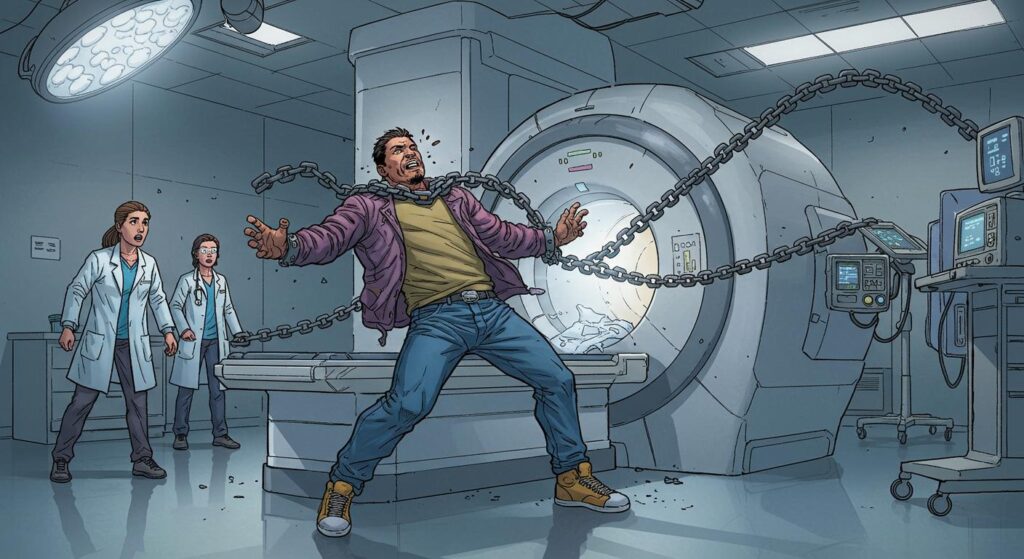Flat tires have always ranked as one of life’s classic irritations—a quick pit stop, a bit of hand grime, an inflated sense of accomplishment, and you’re back on the road. Yet, as illustrated in a recent Motor1 report, the humble nail-in-tire has become the unlikely catalyst for a symphony of technical woes, at least when an Audi is involved.
When a Simple Plug Morphs into a Saga
Motor1 spotlights a TikTok video by creator BleedFuel (@bleed_fuel), who sets out to fix an Audi flat—a basic job that devolves into a labyrinthine process featuring fault scans, electronic resets, and system recalibrations. What should have been a routine repair turned, as the outlet documents, into a half-hour ordeal punctuated by an onslaught of dashboard warnings. As BleedFuel wryly remarks in the video, “This is why no one wants to work at a dealership anymore… you’d think you’d be able to pull this car in, take the nail out, put a plug in, and send it on its way, but no.”
Delving into the chain reaction, Motor1 explains that in modern, sensor-heavy vehicles like the Audi in question, a single low-pressure reading from a punctured tire doesn’t just trigger the standard tire pressure monitoring system (TPMS). The alert cascades to interconnected layers—anti-lock braking (ABS), electronic stability, adaptive cruise, even the parking brake. A minor pressure variance—one tire spinning slightly faster—nudges the ABS module, which in turn prompts the car’s electronic brain to start flagging faults. Before long, as described in Motor1, what began as a single nail spirals into dozens of “hard faults,” with modules wary enough to suspend or restrict major safety features.
Mechanics, Meet Software Creep
In a detail highlighted by Motor1, technicians—whether at brand dealerships or independent garages—are increasingly beset by what’s been dubbed “software creep.” The days of simply extracting a nail and re-inflating a tire have been overtaken by deep diagnostic scans, code erasures, and prescribed calibration drive cycles. What used to require a wrench now demands what Motor1 calls “multi-step digital procedures.”
Unfortunately for most independent shops, the tools needed to perform these digital rites are often locked behind expensive, dealer-controlled software gateways. The outlet notes that full OEM-grade diagnostic equipment can run into thousands of dollars, not to mention the recurring subscription costs needed for access. In many cases, without dealer credentials, mechanics are unable to clear safety-critical fault codes at all—forcing customers to either endure delays or shell out for dealership visits.
This predicament is echoed by technicians online. Motor1 cites an impassioned—not to mention frustrated—Redditor who captures the sentiment on r/Justrolledintotheshop: “I’m fed up with how many special tools you need to do anything… this is how manufacturers get around the ‘right to repair’ act, claiming ‘oh you don’t need to take your truck to a dealer, you just need a $700 special tool that only the dealer sells.’” The art of hands-on repairs, the report observes, is steadily being nudged aside by screen-driven workflows and well-guarded access codes.
Owners Caught in a Feedback Loop
So, what’s an Audi owner to do? According to answers Motor1 gathers from professionals, ignoring the flashing alerts isn’t exactly risk-free; degraded performance from disabled systems such as ABS, traction control, or adaptive cruise could be the result. And unless you’re already the proud possessor of full OEM-compliant diagnostic gear—a rarity outside dedicated dealerships—clearing all modules and returning your car to its fully functional state can be nigh impossible. The outlet also notes that electric vehicles and luxury badges only intensify these complications, with even a minor pressure blip throwing shade on advanced features like regenerative braking.
To make matters more existentially interesting, the report points out that the industry is drifting further toward “vehicle-as-a-service” models. With ever-more cloud-linked diagnostics and software updates, the chasm between owner and object grows, unless regulatory pressures bring about more accessible repair pathways.
A Nail, a Flat, and a Glimpse of the Future
Is all this hyper-connectivity a triumph of progress, or has the pendulum swung so far toward digital oversight that a simple errant nail now launches a full-scale systems intervention? On enthusiast forums, as documented by Motor1, opinions diverge; some Audi techs insist the process is overblown (just “reset in the MMI and off you go”), while others see it as an emblem of engineering excess. One can only wonder: in a world where a $3 tire plug now requires costly software to achieve its full effect, are we solving problems—or inventing new ways to mourn the majesty of the rubber mallet?
It seems safe to say the future of automotive DIY, and perhaps repairs in general, will involve fewer lug wrenches and more carefully worded license agreements. Will the “right to repair” movement gain traction, or will a generation of drivers and mechanics find themselves pining for the days when a flat tire truly was just a flat tire? In the end, maybe the real hazard isn’t the nail in the tire but the locked door it now represents.







